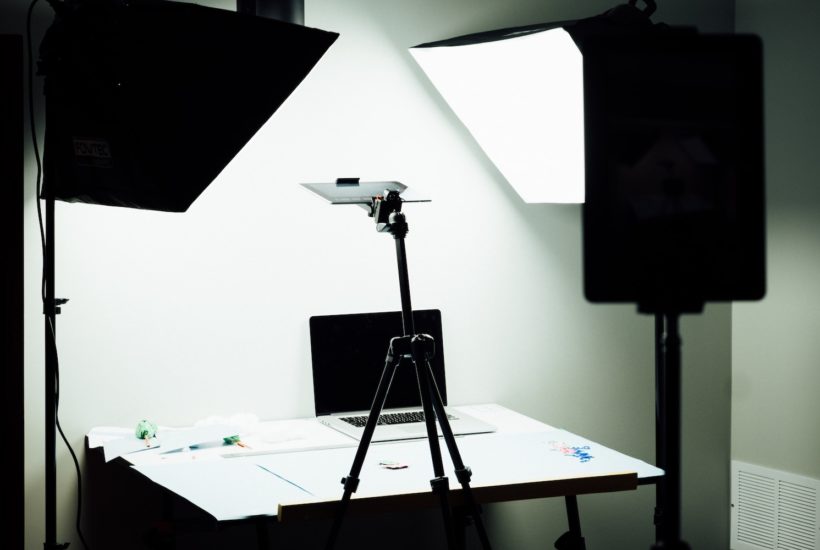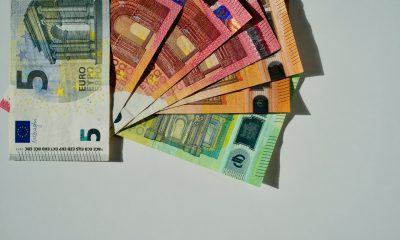Crowdfunding
The Holobox “gives life” to collectible action figures with hologram projections
ZW design is using holographic technology in order to bring life to figurines. The company has faced numerous setbacks, including difficulties with delivery, and unfortunately missing its kickstarter crowdfunding goal. The company hasn’t given up and is now planning to open a new office in China in order to reduce costs. The question remains, is the demand for holographic toys enough?

Bruno Zanetti Westin, 37, is from a generation that grew up watching cartoons; Dragon Ball was one of his favorites. Until recently, he could not imagine that one day he would work with action figures.
Bruno is a graphic designer and does not actually create these figurines. Instead, his startup – the Holobox, founded in 2015 – “gives life” to characters like Thor, Elsa, and even R2-D2, reproducing his skills with a portable projector that can turn the bookcase into a showcase for sound and light.
Just put the action figures in the box developed by Bruno and the holograms projected on the computer will do the rest. Thus allowing the God of Thunder to spark lightning from his eyes, the Queen of Arendelle to release ice from her hands, or the little robot from Star Wars to project the secret plans of the Death Star for his friend C-3PO.
Explore stories, financial news, and content on a whole range of topics; from business to crowdfunding, finance, Africa, and much more. Access the Born2Invest mobile apps full range of journalism straight from your phone.
The prototype was initially created for a watch mark
Born in Poços de Caldas (MG), Bruno always had an entrepreneurial profile. At 16, even before studying Graphic Design at FUMEC, in Belo Horizonte, he was already setting up websites for family friends. After 13 years into his career, he decided to invest in his own office and founded ZW Design in 2011.
“We were never a traditional design office. From the beginning, we mixed design with technology and this feature has been gaining strength over the years.” It was this more “out of the box” approach that allowed the team to present, an advertising campaign for the Seculus watch brand that took place precisely in a hologram box in 2014.
The company had developed a more modern line of watches and wanted some eye-catching features at their points of sale to highlight the product’s strength. From this idea, ZW Design created its own prototype holographic projector from scratch by using wood, acrylic, and bubbled up effects of lightning and thunder that “hit” the watch, thus illustrating its ability to withstand extreme situations.
“Seculus loved the result, but it was the year of the World Cup in Brazil and instead of the event boosting companies, there was a very strong crisis. In the end, the proposal was not used because of the client’s budget cuts,” Bruno added.
The startup preview was a viral video “starred” by Goku
Immersed in the universe of holograms, Bruno continued studying the equipment even after the end of the project. One day he decided to put a Goku figurine inside the wooden box that decorated the table of one of his employees. “Instead of just imagining the superpowers – that yellow aura around Goku, as if he were on fire – I decided to materialize it in the computer.”
In three nights, the methodology was created. “I put the figurine in the box, mapped its position, put it into the computer, created the images for the hologram, and returned it to the projector. It worked super well, but it stood still. So, we decided to call the company’s year-end party as part of the decor,” he remembered.
The embellishment of the firm’s party was so successful that it won a video for social networks. From 90 views on the first day, the recording reached 400 on the second, 1,500 on the third, and 50,000 on the fourth. “We’ve had almost 20 million views in less than three weeks, attracting the attention of people in some 90 countries on every continent. Even the action’s manufacturer figures that hold the license to exploit the franchise worldwide. And I didn’t even know I was selling anything.”
The manufacturer of the action figure was the Japanese Bandai who contacted me to learn more about the holographic projector. And so, halfway through the “scare,” the Holobox was born in 2015. However, at that moment, several doubts were tingling in the entrepreneurs head.
New York brought clarity to the market
Bruno decided the best thing would be to turn the Holobox into a spin-off. ZW Design would continue as a partner office, producing the graphic part of the startup work. Besides Bruno, who took on the role of CEO, two partners embarked on the new business: his brother, Adriano Zanetti Westin, 35, and Sirley Filho, 42.
To find out about the universe he was entering, the graphic designer started attending franchise fairs. And he discovered that the U.S. is the largest consumer market for action figures, a segment that moves $5 billion a year worldwide, according to The Toy Association.
“I went to live in New York for two months, knocking from door to door in the collectibles stores, presenting the Holobox and trying to understand the consumer of these products. And so I understood what we needed to do to turn our prototype into a product.”
Of the 16 establishments visited in this immersion, only one had not seen the viral video. And Bruno pointed out that the market to be explored was the American one – while the U.S. represents 25% of this niche, Brazil has only 3.8%.
To scale, he had to create a library of projections
After diving into the segment and talking to several experts, among them Renan Pizii, co-founder of CCXP, Bruno understood that his hardware would have to work with different dolls, because a collector would not invest in a projector for only one action figure.
To climb further, he would need to develop a library where customers could download pre-paid dolls they wanted to see animated, and also offer options for those who are not so fond of collectibles – there come the animations that do not need dolls, like fireplace, aquariums, bubbles, aurora borealis, etc.
Thus, Holobox has developed a complex operating system, with dynamic lighting, volumetric sound (it is possible to perceive sounds that are in front and behind), and support (to support objects and characters that float).
In parallel, the startup started producing other holograms – Harry Potter is one of those under development today – and entered the FIEMG Lab acceleration program.
Raising money for the Kickstarter was a bust
Manufacturing equipment is costly. To raise money, the entrepreneur bet his chips on Kickstarter, the most renowned crowdfunding platform on the planet.
Bruno had to create a fiscal address in the U.S. to make the campaign viable. The goal was to reach $200,000. The plan, however, did not come out as expected: “Even after a lot of effort, we only reached 20% of the goal. After this crash, we took the risks and opened the direct sale in our e-commerce.”
Thus, the costs to produce the first eight orders – the number of orders they had received by Kickstarter – were born from bootstrapping. The good thing is that without the crowdfunding platform in place, there would be no middleman in the business.
There was about 150,000 reais diluted in ZW Design’s operation, since at the time, the same team was working on the Holobox in their spare time. Startup promised to deliver the product in four months. It ended up taking almost eight due to delays with parts coming in from China, and hardware failures.
Up until then everything moving forward slowly but was fine, and soon after there was good news: the Holobox had become a finalist in the acceleration of the FIEMG Lab, winning a scholarship, the residence in a coworking and the contribution of 165,000 reais from BMG, one of the program’s sponsors.
The first projectors sold broke on the way
After completing manufacture, even with the four-month delay, the first shipment, eight Holobox units, was ready to be shipped to buyers in seven countries. “The team was very excited. We recorded everything in pictures. It was exciting,” recalled Bruno.
The joy, however, did not last long. Although they followed the packing instructions of the post office, and hired safe shipping methods, all the equipment, each weighing 15 kilos, arrived at the destination broken. “To our surprise, we managed to save a projector, sent to Mexico City. The system was powered, but it wouldn’t turn on. The customer agreed to open the device and, in a video call, we passed the instructions to make it work, even though it was very dented. In the end, he was satisfied.”
Most buyers, however, were not so lucky: “We had to return the shipping and customs fees, which increased our loss even more. Then we hired another transport company with a cost three times higher, but which used the same boxes. In other words, the error was not in our packages.”
The shipping problem inspired the creation of a lighter version
Recovering from the fall, Bruno saw that it would be prudent to create a lighter version. So the startup developed a second, more compact product. The Holobox Slim weighs 5 kg, is 23 centimeters wide, 26 centimeters high, and 32 centimeters deep. That’s basically a third of the size of the original version. The only difference in the formatting of the generated image is that it does not count on the lateral view of the characters.
The plan now is to open an office in China and reduce costs
In 2019, the startup made $66 thousand with the sale of the equipment and the single holograms. Still little for the potential of the technology. An obstacle is the high manufacturing cost in Brazil. Because of this, Bruno wants to take the operation to China, and “halfway” has already been covered.
Last year, he enrolled the Holobox in a public notice of StartOut Brazil. Approved, he embarked in December on a mission to Shanghai. For six days, with support from Apex and representatives of Brazilian diplomacy, Bruno had the chance to present his product to the Chinese ecosystem.
Now, he said, he is analyzing proposals from two technology parks that want to open the Holobox in the Asian country still in the first quarter of 2020. Another goal is to participate in Expo 2020, the multi-sector fair to be held in Dubai between October this year and April 2021.
“We want to focus on our B2B solution, showing opportunities in education and health. For medicine, for example, we can create a stretcher with a skeleton and help visualize where the organs are, cover that skeleton with skin, and so on.”
__
(Featured image by Dose Media via Unsplash)
DISCLAIMER: This article was written by a third party contributor and does not reflect the opinion of Born2Invest, its management, staff or its associates. Please review our disclaimer for more information.
This article may include forward-looking statements. These forward-looking statements generally are identified by the words “believe,” “project,” “estimate,” “become,” “plan,” “will,” and similar expressions. These forward-looking statements involve known and unknown risks as well as uncertainties, including those discussed in the following cautionary statements and elsewhere in this article and on this site. Although the Company may believe that its expectations are based on reasonable assumptions, the actual results that the Company may achieve may differ materially from any forward-looking statements, which reflect the opinions of the management of the Company only as of the date hereof. Additionally, please make sure to read these important disclosures.
First published in DRAFT, a third-party contributor translated and adapted the article from the original. In case of discrepancy, the original will prevail.
Although we made reasonable efforts to provide accurate translations, some parts may be incorrect. Born2Invest assumes no responsibility for errors, omissions or ambiguities in the translations provided on this website. Any person or entity relying on translated content does so at their own risk. Born2Invest is not responsible for losses caused by such reliance on the accuracy or reliability of translated information. If you wish to report an error or inaccuracy in the translation, we encourage you to contact us.

-

 Fintech1 week ago
Fintech1 week agoSwiat Secures BaFin Approval and Accelerates Europe’s Digital Securities Infrastructure
-

 Crowdfunding3 days ago
Crowdfunding3 days agoFlower Burger Launches Crowdfunding to Fuel Growth in Booming Plant-Based Market
-

 Biotech1 week ago
Biotech1 week agoNurExone’s Exosome Platform Gains Global Spotlight with Dual 2025 Award Nominations
-

 Business1 day ago
Business1 day agoThe TopRanked.io Weekly Digest: What’s Hot in Affiliate Marketing [K4G Affiliates Review]
























